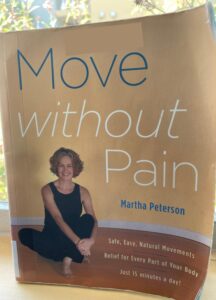Take charge of your anxious body: Somatic relaxation for anxiety
When you think about anxiety, what’s the first thing that comes to mind? The overthinking or the butterflies in your stomach? The lack of concentration or your thumping heart?
Anxiety can be in one of two forms: cognitive anxiety and/or somatic anxiety. Cognitive anxiety refers to the thought processes such as worrying, negative thoughts, or difficulty concentrating. Somatic anxiety refers to the physical sensations in your body such as increased sweating, increased heart rate and elevated blood pressure.
Often, it’s the somatic symptoms that fuel a phobia. Because the body feels so terrible, you will do almost anything to avoid facing the feared situation, whether it’s driving on a bridge, presenting a public talk, or eating at a restaurant. Not facing the feared situation makes the somatic symptoms go away, and makes it more likely you’ll avoid that situation again. This strengthens the phobia or anxiety.
You don’t have to spend your life avoiding nerve-wracking situations, there are other ways to calm your nervous system. Somatic relaxation techniques will help you to feel in control of reducing the physical anxiety symptoms within your body.
Anxiety is a normal part of everyday life. We can feel it when we have an exam coming up, or have to make a speech. It’s irritating and these events might be scary but we get on with it in the best way we can. And often, being nervous can help us perform better. However, when anxiety seriously interferes with your life, and you start avoiding things so much that your life starts to get smaller and smaller, it can be diagnosed as an anxiety disorder.
Either way, knowing about somatic relaxation techniques can be helpful for any type of anxiety. But first you need to know about the relaxation response.
What is the relaxation response?
The automatic fight or flight response your body and mind undergoes in the face of danger, results in the familiar fearful somatic symptoms mentioned earlier. This can happen several times in a day.
Your nervous system may be on high alert, due to old griefs, trauma or current stresses, and if it’s not diffused, can turn into physical tension or hypervigilance (when you’re constantly on-guard, scanning for danger).
In the nineteen-seventies, a cardiologist named Dr Herbert Benson discovered an opposite process called the relaxation response and it’s something we can train ourselves to use to switch off the fight or flight when it’s not needed. Benson, despite criticism from his cardiologist colleagues, believed that deep relaxation was something we should all learn to do, whether by meditation, prayer, breathwork, yoga, chanting, in order to reduce our blood pressure.
The relaxation response, as the opposite of the fight or flight process, changes your physiology back to homeostasis by slowing breathing rate, relaxing muscles, and reducing blood pressure.
Somatic relaxation techniques
So how can you elicit the relaxation response? Remember, somatic relaxation techniques will help you feel more in control of reducing the physical anxiety symptoms within your body.
There are plenty of somatic relaxation techniques, and no single method will work for everyone, so play around with some methods before you find the right one for you.
Here are some suggestions for you:
Progressive Muscle Relaxation
Progressive muscle relaxation (PMR) is a somatic relaxation technique that can help you reduce your stress and anxiety. It involves systematically tensing and relaxing large muscle groups in your body.
It’s often used as the first step in learning a stress relief technique. When I was working as a Clinical Psychologist with people who were clinically anxious this would be a good technique to start with.
Learning what the difference feels like in your muscles when they are tense compared to relaxed.
By first tensing the muscles you can start to feel where you might have been holding tension in the first place. And it can be very surprising! It can help you to identify and strengthen the connection between your body and mind.
A recent study demonstrated that PMR before an afternoon nap could be more restorative. So incorporating a 10-minute PMR session before sleep could enhance your quality of sleep, leaving you more well-rested. Read how naps can save your day here.
Somatic breathing
You can create the relaxation response through somatic breathing.
- Lie on the floor, close your eyes, taking deep breaths while holding your rib cage.
- Notice and sense what’s going on in your body. Tune in to the physical sensations.
- How much movement do your feel in your ribs as you breath deeply? Do you notice one side moving more than the other?
- Breath out very slowly, to calm down the central nervous system. When stressed, your breath becomes tight and shallow. This is the opposite.
This slower breathing will invoke the relaxation response, sometimes known as the rest and digest response as it allows more blood to the digestive system to get things working properly again. But the somatic part of this is the awareness of what your body is doing.
Hanna Somatics
Emotional and mental stress can cause muscle tension within your body. You might notice that your muscles and mind are linked when you watch a scary movie and find you’re tensing your shoulders or stomach muscles. For most situations this is a normal, temporary process.
However, even when you have dealt with the stress, particularly if it’s a traumatic or chronic stress, the tension in your muscles may still persist. This is due to residual patterns of muscular pain, a programming within your muscle memory.

Thomas Hanna, furthered the mind-body connection work of his teacher, Moshe Feldenkrais, melded it with Dr Hans Seyle’s research on stress and designed Hanna Somatics.
His somatic treatment, is a sequence of slow, gentle movements that relax chronic muscle tension by re-educating the brain. Reducing chronic pain or stress in a way that brings the body and mind back into harmony.
If you’ve ever watched a cat get up from a nap, you’ll notice that they stretch one leg slowly, then the other. This is pandiculation, a slow, deliberate, gentle stretch. Very similar to the slow movements used in Hanna Somatics. These exercises are slow and gentle to deliberately reprogram the body’s sensory-motor system, overriding the previous pain.
You can try out Hanna Somatics for yourself by following exercises from Martha Peterson in her book or YouTube channel.
This is not the normal stretching you might do in an exercise class, where you push yourself to stretch. The purpose is to pay attention to the movement. The only muscle you’re forcing is your brain … to focus on the movement.
More traditional somatic movement include yoga, Tai Chi, and QiGong.
Grounding
The practice of somatic grounding helps you to connect with your body with how it feels on the ground.
It offers a way to bring the attention back to your body in order to calibrate it through touching or feeling the solid ground beneath you. Paying attention to the sensations and releasing tension from the body.
You can do a grounding exercise either by sitting, laying or moving. All the while observing your physical sensations.
- Take a moment to notice your overall physical experience.
- Place your feet on the floor, shifting yourself until you feel connected to the ground.
- If walking, notice how the ground supports your feet and feel the heel, ball of your foot and toes as they have contact with the ground. If sitting or laying down, feel your body on the surface of the chair or floor at all points of contact. Notice how the surface supports you. Allow it to be supportive.
- Appreciate the supportiveness of your chair, floor or surface you are laying on. Let yourself sink down.
- Check-in with your body. Sense any changes that may have taken place and what they are.
This exercise can settle your nervous system in a very short time. I have another post on grounding, right here.
Yawn and stretch
Yawning and stretching feels good after waking up and you may also notice that you yawn more when you are anxious.

Yawning is not just opening of the mouth and taking a deep breath, but entails stretching your vocal cords, your pharynx and larynx, opening your eustachian tubes, filling your diaphragm to capacity with air until your intercostal muscles between your ribs are stretched. And after exhaling, the muscles all relax again.
It really gets you ready for action. The scientific term is pandiculation and it is your innate response to a lack of movement, which is why we often do it after a nap.
However, yawning has a way of making us not only relaxed, but also more alert. Probably due to the increase in lung volume and heart rate which has a cooling effect on the brain.
If you teach yourself to voluntarily pandiculate, it allows you to reduce your muscle tension and reset your posture and nervous system. But also help you to focus and concentrate, which is so difficult when we feel anxious.
Taking charge of your anxious body can only happen with somatic education. That is, building a physical of your and knowing what your body does when stressed. And what posture you habitually adopt when under pressure.
But just as important, is practicing these . Use them like you might use a physical exercise routine. Only then, can you relax during a stressful situation. Remember, the aim is not to be super relaxed in a scary situation. It’s just to reduce the somatic symptoms enough to feel in control, so you do not try to escape the situation.
If you like this blog post, you’ll enjoy being part of my fortnightly newsletter. You can sign up to the right, to the right ➡➡

